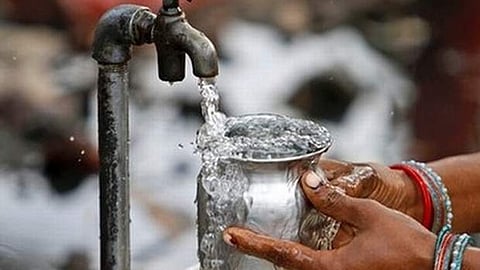

This week India observes the 75 years of its Independence. India has much to celebrate, in particular the preservation of democracy, with all the faults and warts, in a landscape riddled with challenges. There is also much that India and Indians should be troubled about -- particularly in the area of human development.
India is poised to be the most populated nation in the world at over 1.4 billion by 2023 – it will add 300 million to the workforce by 2030 and will boast of the largest working age population way past 2050. This rising young populace has to be nurtured and skilled to thrive in the future. Here is a three-point agenda for India@80.
Primary Education: It is indisputable that India’s primary education system is broken. Funding is an issue – the three-decade-old promise of allocating 6 per cent of GDP for education is yet a promise. What is worrisome is the quality of the outcomes on current spending. Between 2014 and 2020, India’s total spending on education rose from Rs 3.54 lakh crore to Rs 6.2 lakh crore. The 2021 ASER Report shows between 2014 and 2020, the percentage of Class III students in government schools in Karnataka who could read class I text dropped from 41 to 24.2 per cent, and the ratio of students who could recognise double-digit numbers slid from 75 to 60 per cent. Quality deficiency is not limited to Karnataka.
Learning requires teaching – over one lakh schools are single-teacher schools. Just one state, Bihar, has over 2.48 lakh teacher posts vacant. Unsurprisingly four out of ten students (39.5 per cent) need tuition. There is no dearth of literature on what needs to be done – from teacher training to redesigning of pedagogy to leveraging technology. Commissions and reports are aplenty. What India needs is champions for the cause at the Centre and in every State.
Access to Water: The magnitude of India’s water crisis is visible across rural and urban India. In 2019 the government created the Ministry of Jal Shakti and signalled intent with a parade of programmes, including piped water to all under the Jal Jeevan Mission. In 2019 barely 17 per cent of the rural households had access to piped water. In 2022 over 52 per cent of rural homes have a pipe connection. The provision of pipe though is no guarantee for access to water. In June 2017, Pune’s residents petitioned the Bombay High Court to direct the Pune Municipal Corporation to ensure water supply. In August 2022, Pune’s residents and 11 associations are back in court seeking access to water. India’s cities are stranded between tax-paid expectations and predatory private water supply.
A 2018 Niti Aayog states over 600 million face extreme water stress, and 70 per cent of groundwater is contaminated. India has 2.45 per cent of the world’s land and 4 per cent of freshwater resources. Annual precipitation, snowfall and rain is 4000 bcm translating into 1869 bcm of water, of which only a third is harnessed. Global warming threatens to worsen the ratio. India needs to rethink its hydrology management, accelerate restoration of water bodies, expand the use of Water ATMs, redraw the agricultural crop map, induct conservation, improve storage, enable recycling and invest in desalination plants.
Primary Health Care: The pandemic brutally exposed the inconvenient truth about India’s public health care system – and triggered attention and allocation to the sector. India currently runs the world’s largest publicly-funded health insurance scheme for tertiary care -- Ayushman Bharat, covering 100 million households. However, access to primary health care is a mess. It suffers from a lack of funding and insufficient personnel and is trapped between promise and performance. Nearly a billion Indians living in 5.9 lakh villages depend primarily on 1.56 lakh sub-centres – effectively one centre for four villages. Add 25140 primary health centres, each catering to 26 villages and 5481 community health centres, each serving 121 villages at the next level.
The afflicted must reach the nearest centre and hope they find someone to treat them. The saga of vacancies (Rural Health Statistics, 2020-21) is chilling – for instance, at PHCs, 64.2 per cent of the sanctioned posts of health assistants and 21.8 per cent of the sanctioned posts of Doctors are vacant. At CHCs, as of March 31, 2021, out of the sanctioned posts, 72.3 per cent of surgeons, 64.2 per cent of obstetricians & gynaecologists, 69.2 per cent of physicians and 67.1 per cent of paediatricians are vacant. India has 13.01 lakh allopathic doctors – plus 5.65 lakh Ayush doctors -- for 1.4 billion people. The ratio of allopathic doctors to the population is sub-par, and the shortage of paramedics and nurses is acute. Clearly, this is not a sustainable model for development.
The 75th Anniversary of Independence is a time to celebrate -- and to introspect. The occasion calls on the political class to exit the ghetto of alibis – for instance the Centre-State blame and hide game. This has propelled the rise of paid-for private solutions, chronicled in my book The Gated Republic. India’s parties need to forge a consensus to fix the faultlines in governance and which affect the delivery of the most basic of services to the poorest of the poor. As India honours its legacy, it must recognise the need to enable empowerment of future generations.
The Third Eye
Shankkar Aiyar
Author of The Gated Republic, Aadhaar: A Biometric History of India’s 12 Digit Revolution,
and Accidental India
(shankkar.aiyar@gmail.com)